A dream holiday in Mexico on the Mayan Riviera means a week of Caribbean sun, unspoilt beaches and turquoise sea combined with ancient culture, it’s relaxing and lots of fun.
The Mayan Riviera
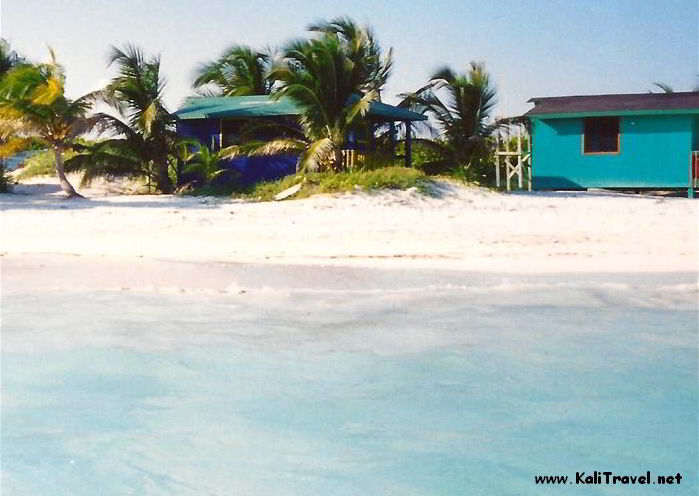
The Mayan Riviera stretches along Mexico’s Caribbean coastline. An unbelievably emerald green sea gently laps endless stretches of fine white sands.
This was to be my first trip outside Europe and it really was a dream holiday, very difficult to equal.
Arriving at Cancun airport officialdom put in an appearance, the passengers were scrutinized at the customs desk and had their passports ceremoniously stamped. Once outside in the warm evening air a guy dressed in safari gear, escorted us onto the coach, giving out general information during the drive to our fabulous hotel complex near Akumal.
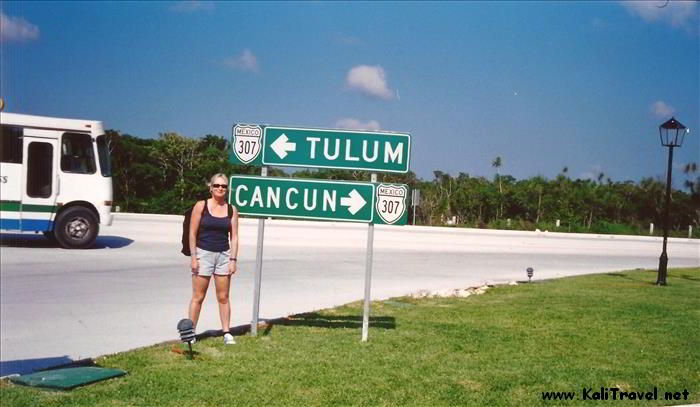
This is the great Yucatan Peninsula, famous for its incredible beaches and Mayan ruins. It’s a picture-perfect destination bordered by the Gulf of Mexico and the Caribbean Sea.
At the northern tip, Cancun is the modern, mega tourist destination. A long thin sandy strip of land, 15 miles long, running parallel to the coast boasts dozens of upmarket five star hotels, shopping malls, fabulous restaurants and night clubs, all the entertainment one could desire.
Taking the coastal highway further south, the Riviera Maya is more secluded and restful. In fact, Federal Highway 307 eventually reaches Chetumal, on the border with Belize, some 600 kilometres away.
Grand Bahía Principe Tulum
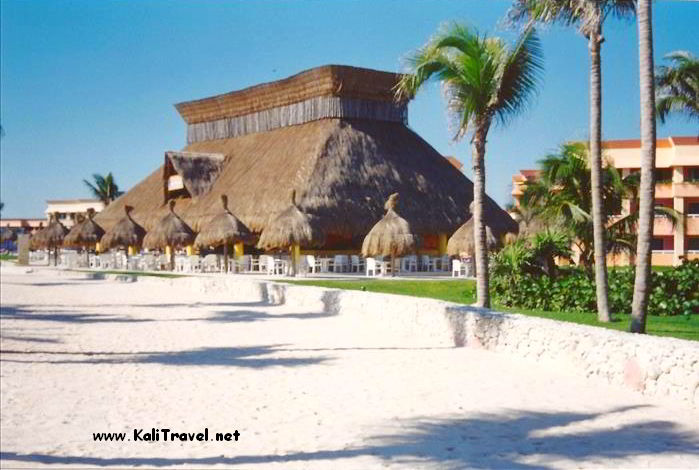
Arriving at our sumptuous all-inclusive Mexican resort, a fabulous beach-front complex surrounded by private parkland and lagoon style pools – I just couldn’t believe how beautiful everything appeared to be. Reception was in the vast lobby, palm trees, fountains, wicker sofas and tables were under a magnificent palm roof, a gigantic sunshade, “palapas” as they are called.
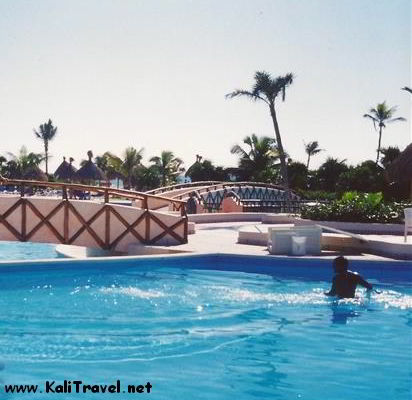
The main social buildings, restaurants, lounges, bars and theatre all had the same tribal but extremely luxurious open plan design, letting in the slightest of breezes.
It was a delight to discover lake-shaped swimming pools, crossed by wooden bridges leading to pool bars where delicious iced cocktails were served. A useful Mexican colloquium quickly learnt was “bicicleta” (bicycle), a curious term for ordering a shandy.
After eating dinner at a beachside cafe, guests were shown to their suites in pink villas scattered among the exotic vegetation. The setting is like a film scene, perfectly gorgeous for honeymoon romance or escaping city life on the best girls getaway trip you can imagine.
Valladolid, Mexico
Apart from the glorious beaches, one of the attractions in wanting to visit this part of the world was to see the lost Mayan civilization, the famous pyramids of Chichén Itzá. So armed with my instant camera, I set off to see one of the legendary wonders of the ancient world. A new, smart little air-conditioned mini bus took us on a three hour trip along the pot-holed road which crossed the impenetrable jungle.
On the way, the vehicle stopped at rustic indoor market where authentic handmade Mexican souvenirs were on display. Wooden statuettes, stone sculptures, blue glass ware, silver jewellery and brightly woven wall hangings seemed to be the main crafts on sale.
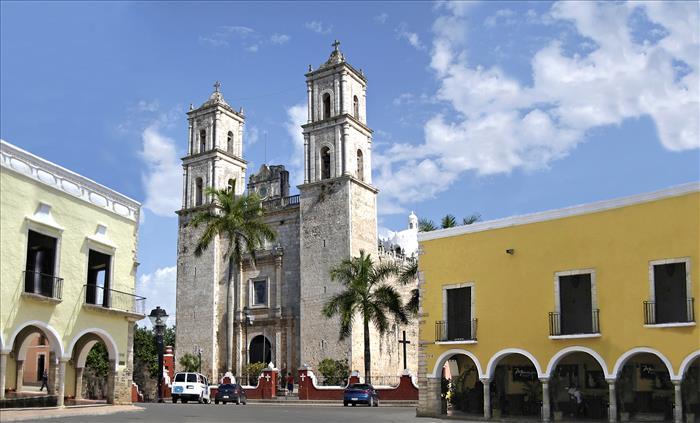
A short stop in Valladolid was an insight into Yucatan life and it’s a shame we weren’t there longer. A colonial town with an ancient cathedral (St Servacio built in 1543) in the main square and side streets lined with brightly painted houses, on a Sunday morning townsfolk were dressed up and walking to mass.
It’s worth staying for a few hours in Valladolid to appreciate the local culture and genuine Mexican cuisine, or even overnight to see the light show at the old Bernadino Convent if you have time.
Chichén Itzá

The ruins of Chichén Itzá lie about midway between Cancun and Mérida, Yucatán state capital city. Chichén Itzá has been widely excavated and studied more than any other of the Mayan cities. Yet its history is still clouded in mystery with many contradicting theories and legends.
A large Mayan community thrived here between 700 AD and 900 AD, building the main constructions in the central area including the Kukulkan Pyramid, while the Warriors Temple and the Ball Court are Toltec (natives from Central Mexico) in design. I was quite surprised but glad to see that most of the four square miles comprising the site are shady and tree lined.
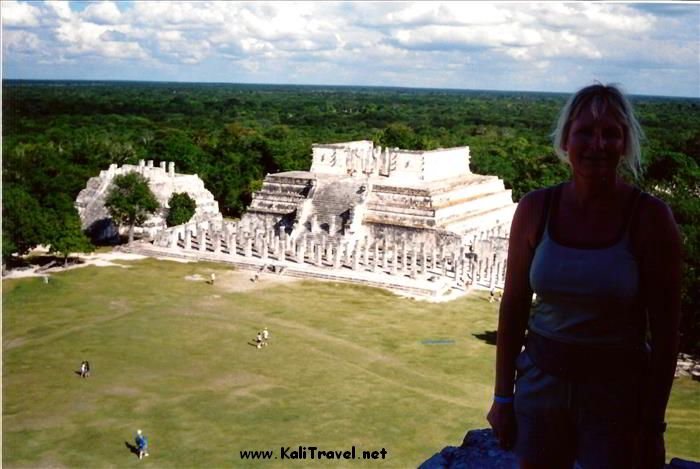
Towering above the other structures at 79 feet, the Kukulkan Pyramid has been restored on two sides, allowing intrepid visitors to climb the many steps to the top. In total the pyramid has 365 steps, one for every day of the year.
The temple at the top has carvings of Chac, the rain god and Quetzalcóatil, the serpent god. The view from the summit was spectacular, affording a stunning vista across the rest of the ruins and the virgin jungle which stretched away, unbroken by civilisation, endlessly in all directions.
Looking down from the dizzying heights, the descent was quite worrying but I unceremoniously made it down, sideways on, in a crab like stance. At the base of the northern stairway a narrow tunnel leads to the old temple underneath; in the gloomy interior a sculpture of a red painted jaguar glares out with jade eyes, exactly as it was originally discovered.
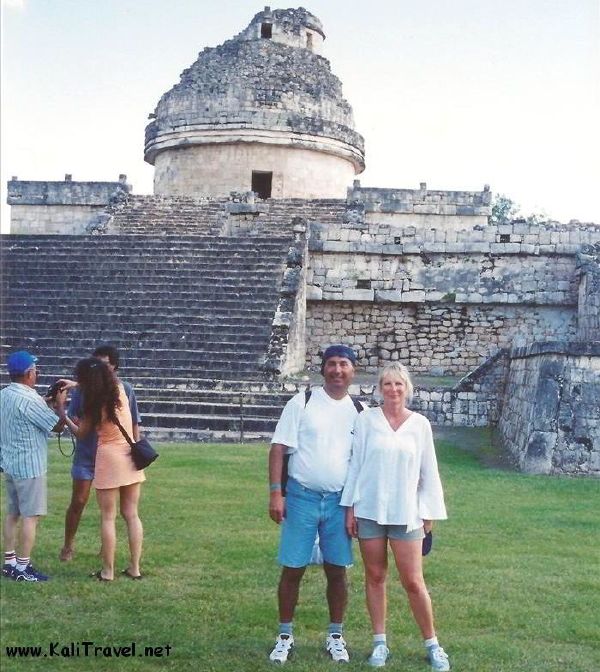
* You are no longer allowed to ascend the Kukulkan Pyramid
Nearby the “Group of the Thousand Columns” is a maze of stone columns, some engraved with Toltec soldiers guarding the Warrior Temple.
The Nunnery and the Church, erroneously named by the Spanish, are situated in the southern part of the site and are in relatively poor condition.
The “Caracol” is so called as the curved inner stairway is reminiscent of a snail. Also known as the Observatory, the tower was used for astronomy; its windows were aligned with the four cardinal directions and the position of the setting sun with the equinox.
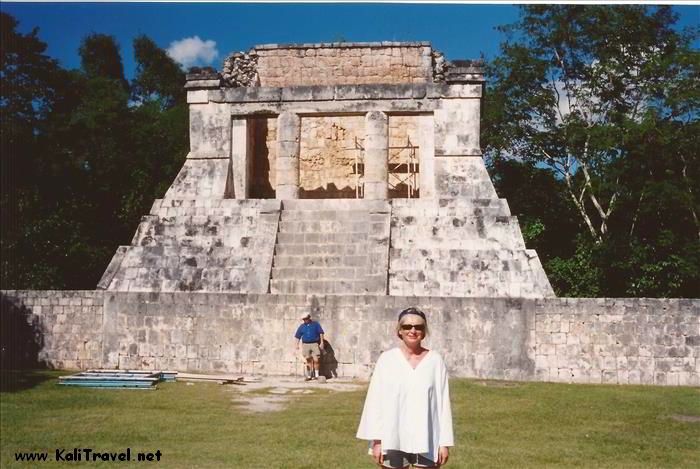
Our guide for the day rejoined us at the Great Ball Court. Longer than a football pitch, the goals are 20 feet high – ancient tales of the warrior’s sports field and their favourite team ball game made our blood run cold.
The atmosphere here made it easy to imagine the cheering crowds of bygone centuries when only the best were selected to play and the captain of the winning side had the ultimate honour of being sacrificed to the gods.
The carvings on the lower walls depict the ballgame with gruesome clarity. The Jaguar Temple is adorned by friezes of the jaguar emblem and the Tzcompantil or Platform of the Skulls is believed to have been used for the human sacrifices.
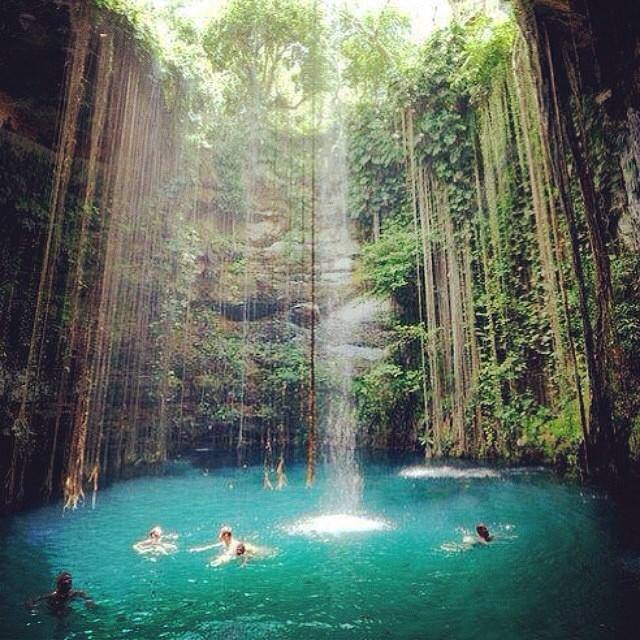
From the Venus Platform a pathway leads to the sacred Cenote. A Cenote is a deep circular hole in the limestone ground, a cool pool leading to an underground river.
Very important to the Mayans as a source of water they had a deep religious significance too. You can just imagine where the unfortunate martyrs were thrown along with offerings of priceless treasures! Not surprisingly, this is one of Mexico’s most famous cenotes.
Our trip included a late lunch in a typical restaurant in a nearby indigenous village. The food was nothing to write home about but I must admit I noticed that everything was spotlessly clean, as were all the places I visited in this part of Mexico, however poor the people appeared.
Typical dances were performed by various generations of the family run restaurant, everyone dressed in folkloric costumes down to the tiniest tot.
At the doorway small village children were selling wooden and stone carvings at a pittance. Not being able to resist the temptation or the sun-tanned little mites I acquired a set of small statues – The Money God holding a coffer, the Fertility God holding a corn on the cob and The Rain God – all made from local wood.
Xel-Há Park
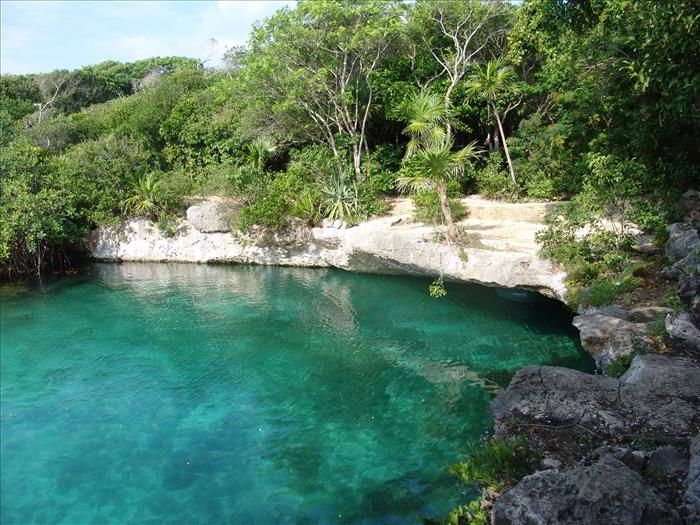
Xel-Há was just a short ride from our resort and is definitely worth visiting. Millions of years ago the Gods created the most beautiful corner of Maya land and called it Xel-Há. They were pleased with their efforts and decided to share it with man, but to keep the park from being destroyed or polluted they named the Iguana and the Parrotfish guardians of the land and sea.
Legend has it that Ischel, the goddess of fertility is so pleased with Xel-Há and the work of the guardians that she is often in residence and many an afternoon her perfume lingers in the air.
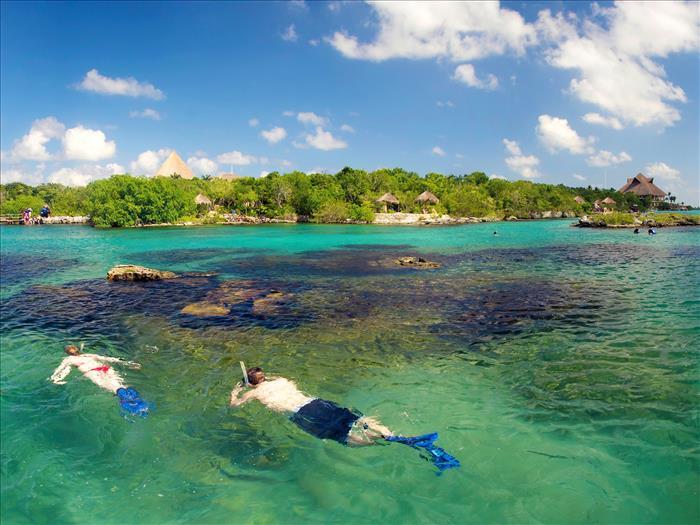
The Mayan term Xel-Há translates “where the waters are born” or “where the waters converge” and is especially appropriate. The pure waters are a combination of saltwater from the Caribbean and freshwater from the region’s underground rivers (a feature of the Yucatan peninsula).
Xel-Há is a unique natural phenomenon and a protected habitat for regional marine life. The flora and fauna create an exotic, natural setting for the park.
You can experience this wonderland walking the paths winding through the park where you’ll encounter fossils, caves and two enormous “cenotes”, the regional term for freshwater sinkholes. Swimming in the lagoon amongst the multi-coloured tropical fish and playing with the dolphins is an unforgettable experience.
Playa del Carmen
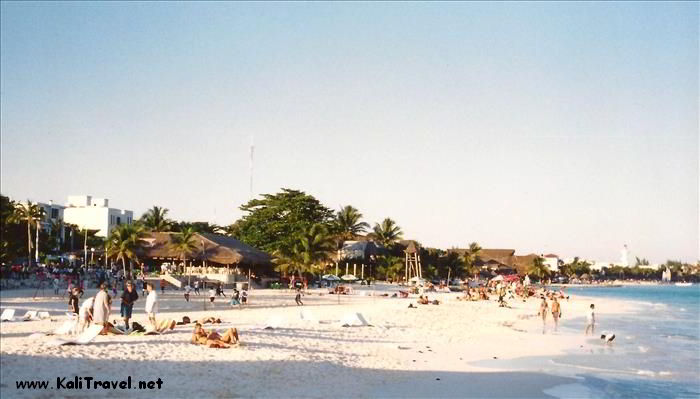
On another day, we caught the bus into Playa del Carmen, once a small, sleepy fishing village located in a picturesque enclave.
Over the past decade or so Playa del Carmen has grown to become the lively centre of the Riviera Maya beach scene, with lots of new restaurants and family friendly hotels, but fortunately maintains much of its charm. Exciting things to do here include Bull Shark diving (November to January).
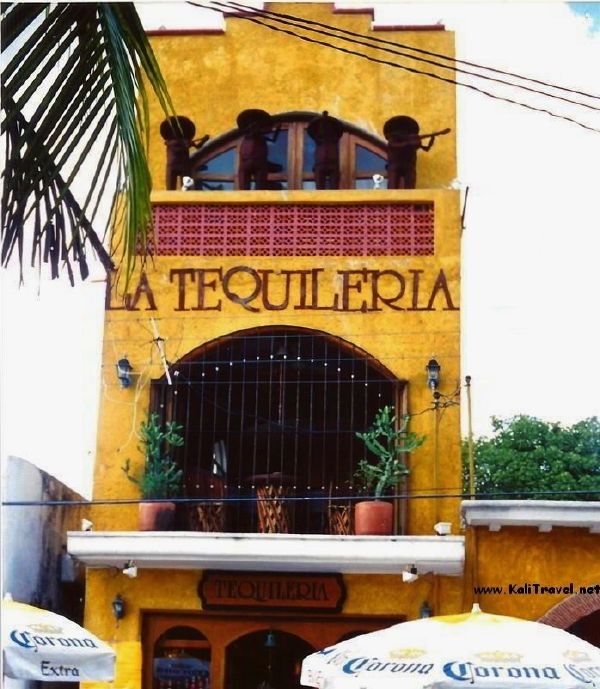
From Playa del Carmen you can get a boat trip from the quay over to Cozumel Island. Cozumel is perfect for scuba diving with an incredible choice of dive sites suitable for all levels, even beginners… coral reefs, underwater caves, and swim throughs with colourful tropical fish.
A favourite stop for cruise liners, there are lots of other things to do in Cozumel too, so go over for the day if you have time!
Isla Mujeres is another beautiful island further up the coast near Cancun – it’s easy to get there on a day trip, otherwise go up to the city by bus or on a shuttle straight to the ferry port and get the boat across.
Tulum Fortress
We got on one of the local minibus vans, that pick up travellers on the main coast road for a reasonable fee, for the short drive south to discover Tulum. It’s a fascinating heritage site and the only walled city that the Mayans ever built on the Caribbean coast.
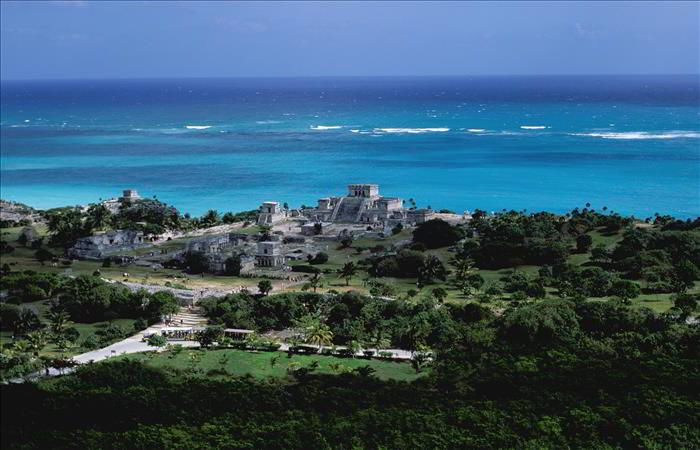
The ruins of this ancient culture, temples perched on top of limestone cliffs, are fascinating and the backdrop against the turquoise sea is a fabulous setting that appears in all the holiday brochures. There’s a great outdoor market where you can bargain for gifts and there’s the chance to watch the Voladores de Papantla, the ‘pole flying dancers’ performing their ceremonial ritual.
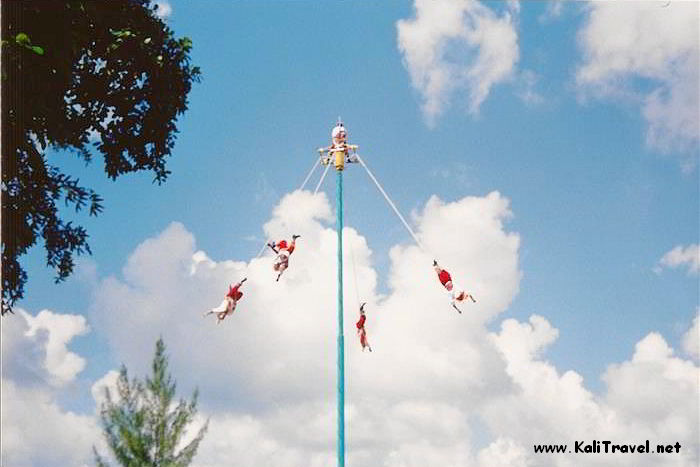
Tulum Beach
I spent the afternoon lying in the shade of coconut trees on the powdery white sands of Tulum beach and swimming in the turquoise sea. We had a cool drink at a beach bar in the only place around, a complex of sustainable bohemian cabins, to end the perfect day.
A dream destination for a honeymoon, Tulum is a picture postcard setting which is still fairly unspoilt today, Although the resort has grown with boutique hotels and upmarket restaurants
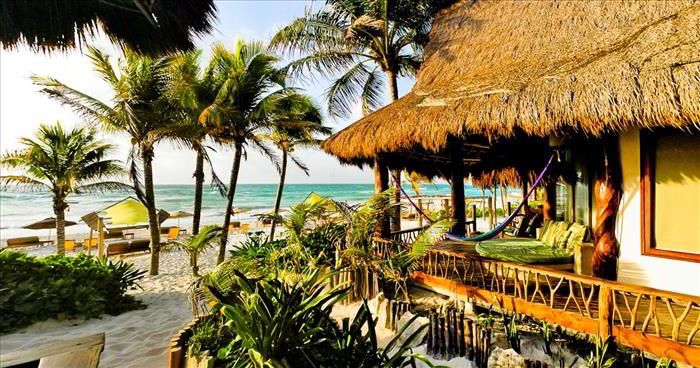
The rest of the holiday was spent lazing on the white sandy beaches, swimming and snorkelling in the calm, warm sea. I really haven’t swum anywhere in the world as amazing as the Caribbean.
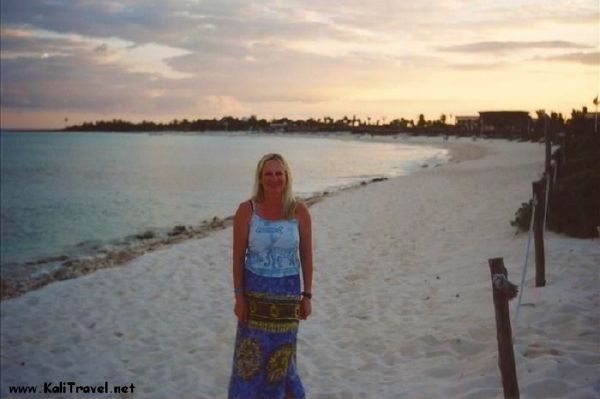
Reading this article tonight, one of my first travel reviews, brings back the most incredible memories of a beautiful country and the warm-hearted Mexicans I had the fortune to meet.
Websites of Interest for the Riviera Maya
Video of Tulum Beach
Video of Chichén Itza
Related Posts: Gulf of Mexico and Caribbean Beaches
Orange Beach and Gulf Shores (Alabama)
The top things to do in Orange Beach and Gulf Shores – discover the white beaches, nature trails and fresh seafoods of Alabama Gulf Coast. This is a beautiful destination in America’s deep south on the Gulf of Mexico.
Colombia’s Caribbean coast has gorgeous beaches, mountains, and even a desert. This is Colombia’s most popular region for tourism. Learn about 14 great places to visit on Colombia’s Caribbean coast.
Cahuita on Costa Rica’s Caribbean Coast
Discovering Costa Rica – days 2, 3 & 4.
Early in the morning we took the public bus from the Caribe terminal in San José down to Limón on the Caribbean Coast. This scenic route runs through rain forests and across the canyons…
Discover the World with![]() the blog with a focus on independent budget travel
the blog with a focus on independent budget travel




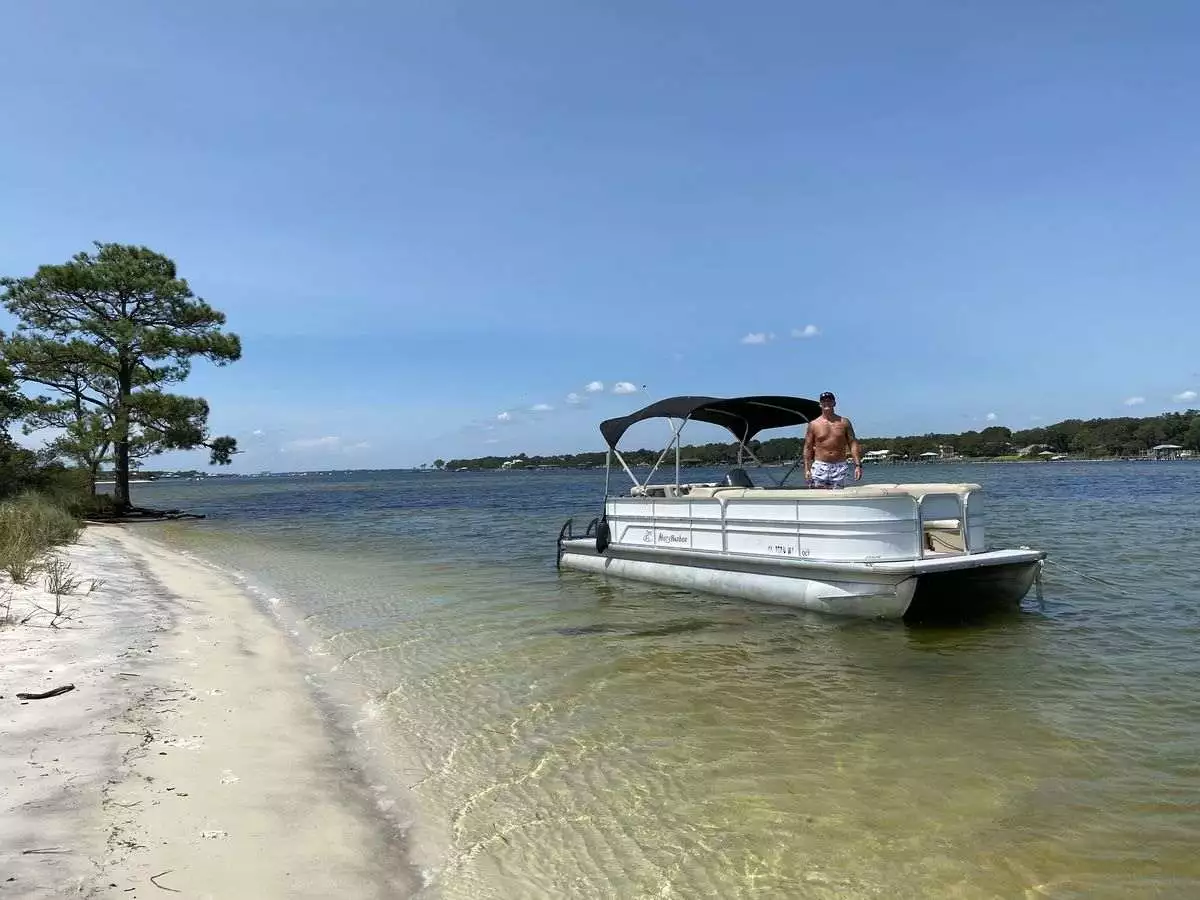
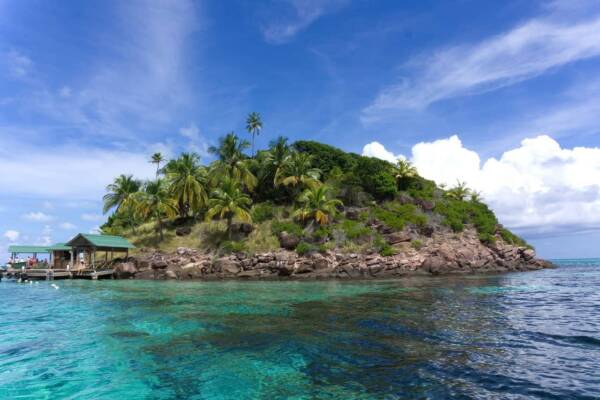

Precioso lugar. No he tenido el gusto de vistarlo, pero mi hija estuvo por la zona hace dos años y vino encantada, por todo, el apartado histórico desde luego, pero también por otros atractivos como la renombrada Playa del Carmen. Destaca también, el extremado encanto y amabilidad de las gentes con las que ha tenido que tratar.
En definitiva, que habrá que visitar la Riviera Maya, sin excusa.
It is amazing to think that many centuries ago civilizations were walking our planet before us. It looks to me that there were bigger civilizations than we thought. If that’s the case then they must were more advanced than we actually know about them. More discoveries will let us know them better.
I want to share with you this music about the mystical place Chichen-Itza. The message of that music is about a CHANGE all humans must do in order to live in peace and harmony. Maybe that’s the message ancient civilizations wanted us to know.
Arriving at Chichen-Itza 2012
http://www.youtube.com/watch?v=zlZh2nwdRBY
In Lak’Ech. Peace from Mexico.
Gracias por el video y la musica, es genial!
Viajar hace que mentalmente elimines toda clase de nacionalismo absurdo. Es muy recomendable salir de tu casa y abras tu mente a nuevas experiencias.
De todas formas, si por culpa de motivos económicos no puedes, desde este blog puedes abstraerte y pensar que estuviste allí.
Buenísimas las fotos y las descripciones de los sitios.
Saludos David
Riviera Maya is one of our most favorite places in the world! Tulum is definitely a must-visit! Thanks so much for sharing! We have to get to Chichen Itza next time in the area!
Tulum was our first exotic holiday and will always hold a special place in my heart! (We’d never been outside of Europe before!). Chichen Itza is fascinating, you just have to go!
Great post on beautiful part of Mexico!
Looks like a lovely resort & you were able
to fit in so much! Love that you bought handmade
statues from the kids- usually my favorite travel
souvenirs!